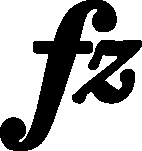



The missing  in A (→FE→EE) must be Chopin's inadvertence; while adding those marks on the last page of the Prelude, he could have easily overlooked this bar, written as the only one still on the previous page of A (see above, the note on the slur). The fact that this note was also supposed to be accented (like all the others) is proven by FCI, AM as well as by a testimony of Chopin's pupil, Madame Dubois, conveyed by Ignacy Jan Paderewski:*
in A (→FE→EE) must be Chopin's inadvertence; while adding those marks on the last page of the Prelude, he could have easily overlooked this bar, written as the only one still on the previous page of A (see above, the note on the slur). The fact that this note was also supposed to be accented (like all the others) is proven by FCI, AM as well as by a testimony of Chopin's pupil, Madame Dubois, conveyed by Ignacy Jan Paderewski:*
"I remember once when I was playing the 17th Prelude of Chopin, Madame Dubois said that Chopin himself used to play that bass note [A 1] in the final section (in spite of playing everything else diminuendo) with great strength. He always struck that note in the same way and with the same strength, because of the meaning he attached to it. He accentuated that bass note—he proclaimed it, because the idea of that Prelude is based on the sound of an old clock in the castle which strikes the eleventh hour. [...] Chopin always insisted the bass note should be struck with the same strength—no diminuendo, because the clock knows no diminuendo.”
1] in the final section (in spite of playing everything else diminuendo) with great strength. He always struck that note in the same way and with the same strength, because of the meaning he attached to it. He accentuated that bass note—he proclaimed it, because the idea of that Prelude is based on the sound of an old clock in the castle which strikes the eleventh hour. [...] Chopin always insisted the bass note should be struck with the same strength—no diminuendo, because the clock knows no diminuendo.”
Fontana, who knew the Prelude from a still earlier version, apparently memorized that effect, since he added  in FC (→GE).
in FC (→GE).
* I. J. Paderewski, Mary Lawton, The Paderewski Memoirs, London 1939, p. 154.
Compare the passage in the sources »
category imprint: Differences between sources
issues: Errors of A, Fontana's revisions
notation: Verbal indications

